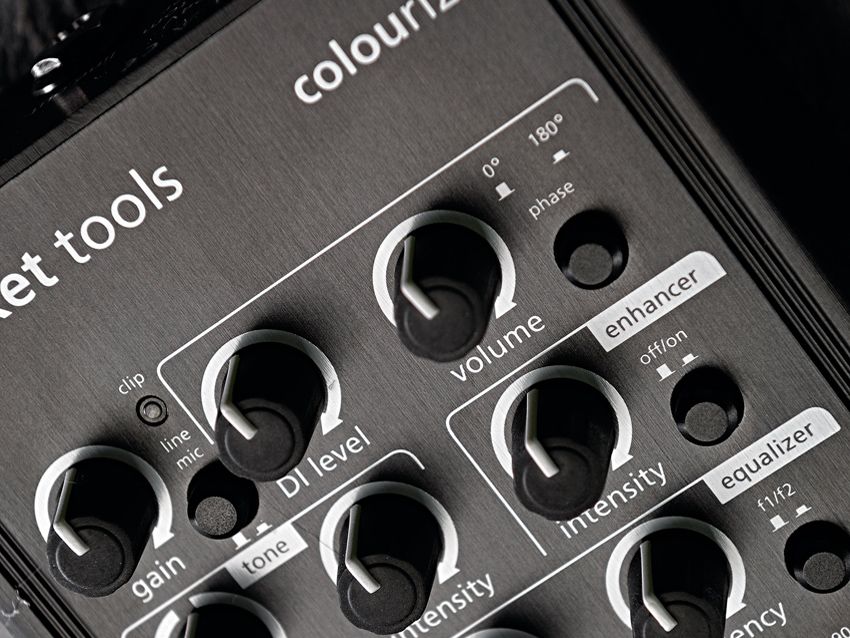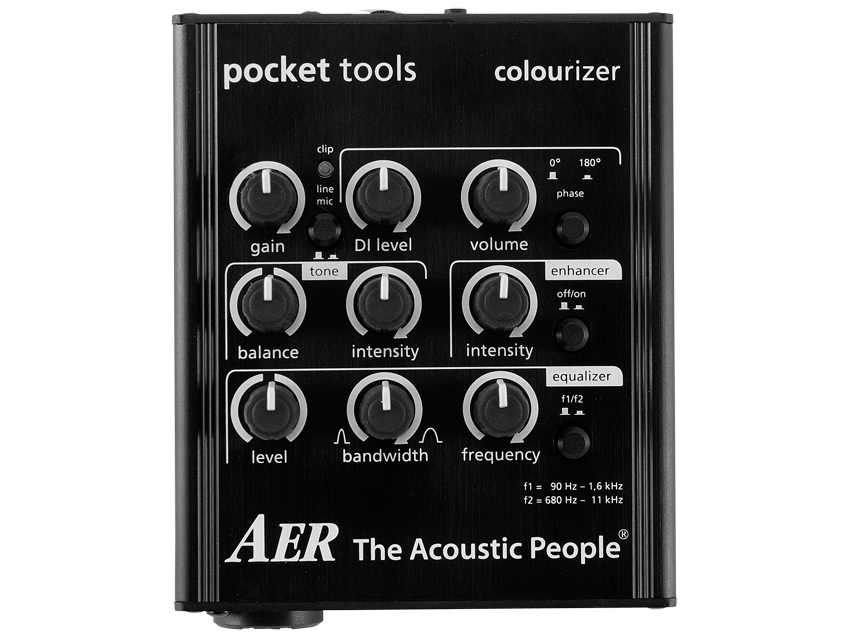MusicRadar Verdict
A great tool for shaping the sound of your electro-acoustic.
Pros
- +
Solid build quality. Quiet operation. Good combination of gently tone-shaping and precision EQ.
Cons
- -
It only has 24V phantom power, as opposed to the standard 48V, so you'll need to run some high-end condensor mics.
MusicRadar's got your back

AER Pocket Tools Colourizer

AER Pocket Tools Colourizer
AER is perhaps best known for its impressive range of acoustic amps, but has now channelled its expertise into the Pocket Tools - a new range of easily portable compact processors that each offer different useful elements of AER's technology for acoustic instruments.
The size of a large stompbox and designed to sit firmly on the floor, the unit is extremely well put-together, with a solid black anodised aluminium body and ergonomic rubber-coated knobs.
"You can switch in an enhancer with an intensity knob to add harmonics to the signal to enrich the sound"
It comes in a smart zippered carrying case, with an identical case holding the power supply, which is an in-line 24V DC adaptor with a little over four metres of cabling to let you reach across the stage or studio floor.
Build
The Colourizer is a preamp and DI for a single microphone or a line level instrument connected via the combi socket, again with switchable 24V phantom power.
Before the signal is outputted via the XLR DI output and the standard line output jack there are a bunch of tone-shaping tools that can be applied to it.
A parametric EQ with two selectable frequency ranges has three knobs controlling the action by adjusting level, bandwidth and frequency.
There's 15dB of cut and boost with bandwidths from one octave to 1/6 octave at frequencies within either the lower range of 90Hz to 1.6kHz or from 680Hz to 11kHz.
Want all the hottest music and gear news, reviews, deals, features and more, direct to your inbox? Sign up here.
A further tone section with balance and intensity knobs is designed to allow bass or treble accentuation or a combination of both. On top of that you can switch in an enhancer with an intensity knob to add harmonics to the signal to enrich the sound.
A separate line output, found here and in the Dual Mix, can be used to send a signal to an onstage monitor while the main DI signal is sent to front of house.
Sounds
The Colourizer's forté is to bring out the best from your instrument. The Parametric EQ is clean and precise and offers tone shaping that can be used to enhance and get the optimum sound, but also get you out of trouble if there are any feedback-causing frequencies that need taking out - the switch that inverts the output signal in relation to the input signal by 180 degrees could be useful here too.
Elsewhere, the tone and enhancer sections combine to generally give you a bigger sound.
With low noise and plenty of headroom, there's no doubting the quality of this little box and the price reflects that - this is a professional toos for players who are serious about getting the optimum sound.
Anyone gigging regularly with just an electro-acoustic guitar would do well to carry Colourizer with them rather than rely on the vagaries of any particular venue's own DI boxes.
If you have no tone controls on your instrument, the Colourizer would be a useful live asset and could get you out of tricky situations.
Trevor Curwen has played guitar for several decades – he's also mimed it on the UK's Top of the Pops. Much of his working life, though, has been spent behind the mixing desk, during which time he has built up a solid collection of the guitars, amps and pedals needed to cover just about any studio session. He writes pedal reviews for Guitarist and has contributed to Total Guitar, MusicRadar and Future Music among others.
